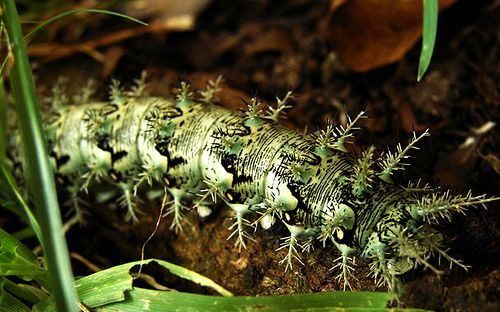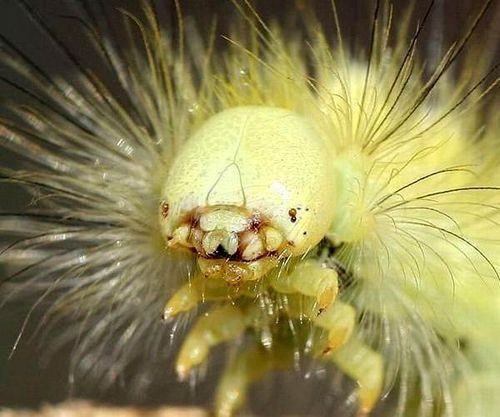In the tropical forests of southern Brazil, there exists a species of caterpillar known locally as the “lazy caterpillar,” scientifically named Lonomia.
The Most Terrifying Killer Caterpillar in the World
However, unlike its seemingly benign appearance, it harbors a type of toxin that can be deadly. If one is unfortunate enough to come into contact with the spines of this caterpillar, they may suffer from internal bleeding, liver failure, and a condition that medical professionals term “Hemolysis.”

The Angel of Death Appears
Hemolysis refers to the breakdown of red blood cells, leading to a rapid decrease in their numbers due to various factors.
Normally, a red blood cell lives for about 120 days before it breaks down and is replaced by a new one, maintaining a balanced count of red blood cells in the bloodstream. In this case, the sudden and severe drop in red blood cells compromises the body’s immune response and triggers numerous other complications.

Based on local knowledge, merely touching this caterpillar is synonymous with touching the “scythe of the grim reaper.”
The venom of the Lonomia caterpillar is among the fastest-acting poisons ever discovered worldwide. A victim can die just six seconds after being stung (which is less than 0.06 seconds compared to being bitten by the most venomous snake).
 They can camouflage remarkably in their environment
They can camouflage remarkably in their environment
The dangerous aspect of this caterpillar is its difficulty of detection. They inhabit tree trunks and hide beneath a colorful bark. In many instances, discovering their presence is synonymous with a death sentence.

The Lonomia caterpillar only appears in brightly colored bark for 2 or 3 months of the year. During the remaining time, they blend in and shift to a darker color, making them very hard to spot. If you travel to Brazil, be sure to avoid any species of caterpillar, especially those that hide within tree barks in the tropical forests of southern Brazil.
 Every year, there are several fatalities caused by this insect.
Every year, there are several fatalities caused by this insect.




















































